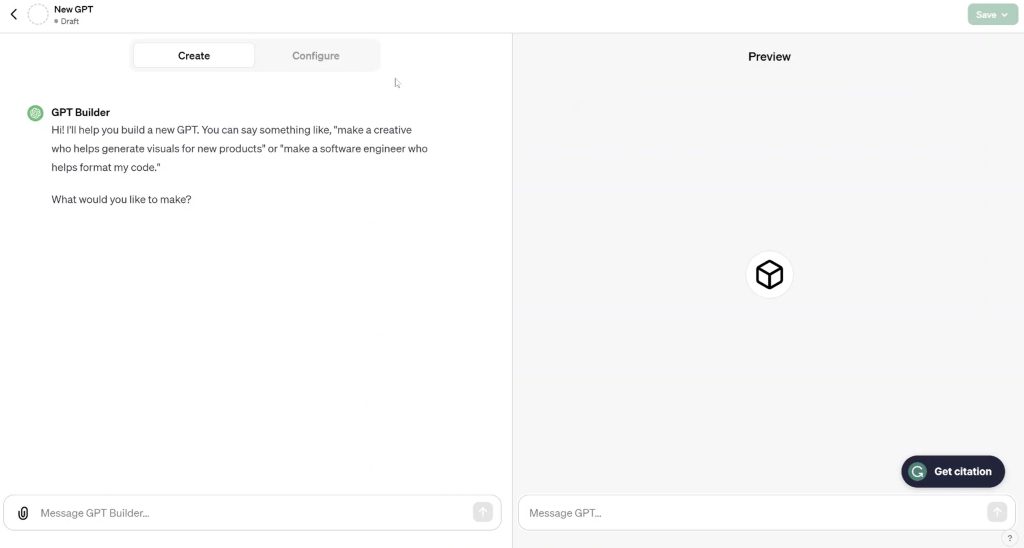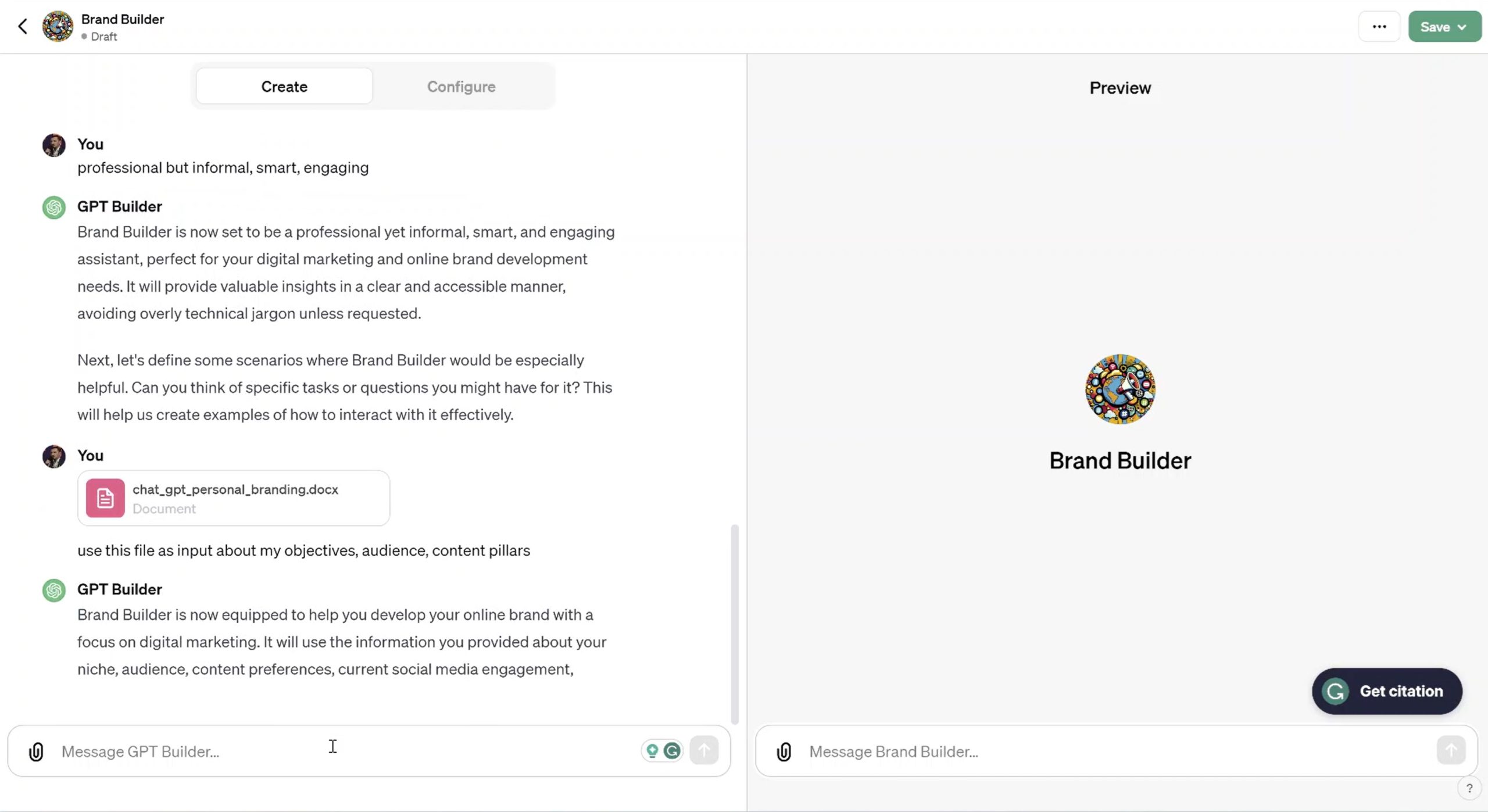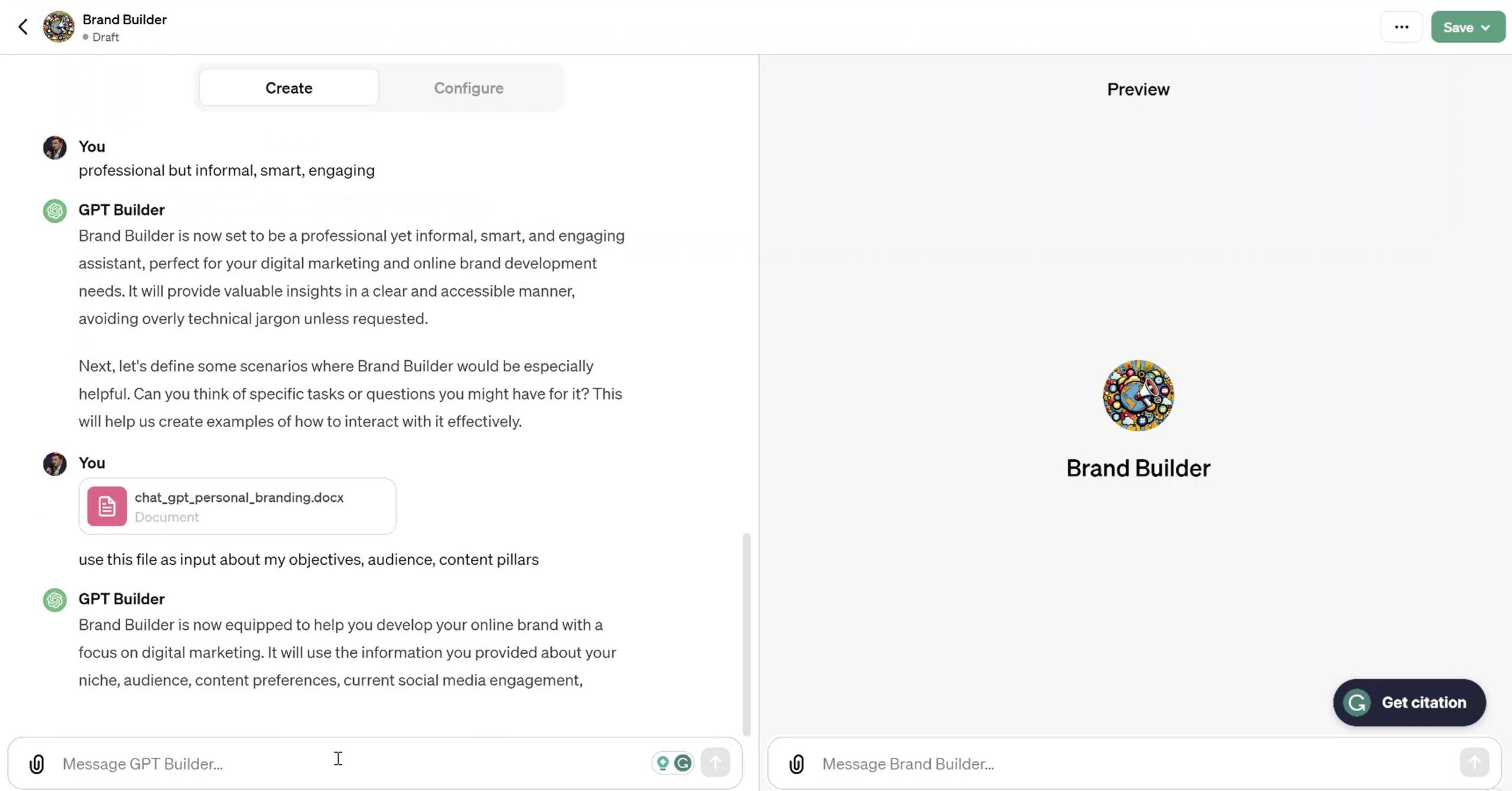Welcome to the first edition of the UpLevel! Newsletter. I started this project based on my own effort (and struggle) to build a strong, sustainable, and resilient online presence. My promise is to deliver you a bi-weekly pack of actionable insights about growing and securing your online brand. This newsletter edition will walk you through the process of tailoring a Custom GPT (based on ChatGPT) to your unique personal branding goals, ensuring that your digital identity resonates distinctly and effectively with your audience.
As the digital space becomes increasingly saturated, standing out requires not just a strategy and tactics but also innovative tools. Whether you’re an entrepreneur, a digital marketer, or a professional seeking to elevate your online presence, understanding and leveraging the new generation of AI-driven tools can set you apa
Explore more
Crafting Your Digital Identity
In the journey of personal branding, the first step is always about introspection and clarity. Your personal brand is a reflection of your professional narrative, values, and the unique amalgam of skills and experiences you bring to the table. It’s crucial to articulate this identity before leveraging any tool, AI included.
- Articulate Your Brand Persona: Start by asking yourself key questions: What are the core values and messages you want your brand to embody? How do you want to be perceived by your audience? This persona will be the cornerstone of all your branding efforts, guiding the voice and style of the content your GPT will generate.
- Define Clear, Achievable Goals: What specific outcomes are you aiming for with your personal brand? Are you looking to increase engagement, drive more traffic to your blog, establish yourself as a thought leader, or something else entirely? Setting clear and measurable objectives will enable you to tailor the GPT’s output effectively to your needs
Align GPT with Your Strategy
A custom GPT can help you scale your content production, provide insights based on data analysis, and even help fine-tune your messaging based on audience engagement. However, the core of your brand should always be authentically you. The technology is there to support and enhance your unique voice, not overshadow it.
In the following sections, we’ll delve deeper into the technicalities of custom GPTs, how to collect and train data that reflects your brand, integrate these tools into your strategy effectively, and measure their impact. But remember, all these steps rest on the foundation of a well-defined personal brand.
Gathering the Right Data
Generative Pre-trained Transformers (GPTs) represent a leap in AI technology, enabling machines to generate human-like text. ChatGPT was the first Generative AI solution that went viral. Others (like Google BARD) followed. Custom GPTs are tailored versions of this technology, trained on specific datasets to align with your personal branding goals.
The effectiveness of a custom GPT hinges on the data used for its training. Start by compiling a dataset that includes your previous content, audience insights, and any material that reflects your brand’s voice and tone. This could include blog posts, social media updates, and even recorded talks or podcasts. You don’t need a specific format as ChatGPT is perfectly capable of ingesting almost everything you can throw at it. The most important thing is to collect the relevant data. It’s similar to how you work with a consultant: the more accurate and comprehensive you describe the context, the better will be the advice.
Once you have your dataset, the next step is training the GPT. This process involves feeding the GPT your data so it learns to mimic your brand’s style and tone. The goal is for the GPT to generate content that is indistinguishable from what you would create yourself.
Step-by-Step Guide to Setting Up a Custom ChatGPT for Personal Branding
Prerequisite: Ensure you have a ChatGPT Plus license, which grants access to the GPT-4 model necessary for creating a custom GPT.
- Log into your ChatGPT account.
- Navigate to the “Explore” section and click on “Create a GPT”. The GPT builder will open and will guide you through the process.

- Provide instructions on what this model is intended to help with: “This Custom GPT will help me develop my online brand”. The GPT builder will respond by confirming your instructions and updating the GPT model.
- Provide further instructions on what capabilities you want to model to have. For example, “Update this GPT model with the latest knowledge on digital marketing and content creation”.
- Add custom information. For example, I used a previous conversation with ChatGPT that included details about my objectives, target audience, professional background, and topics I looking to address. Simply drag and drop the files you want to use as training data and add these instructions: “Use these files as training data”.

- Click “Save” on the top right and choose if you want the new Custom GPT model to be private to you (recommended if you provide personal data and goals) or public.
- The new GPT model will appear on the left side of your browser underneath “ChatGPT”. When you want to use it just click on it and you can start a new conversation with your personal brand advisor.
- If you want to update your model with new information, go to “Explore” and click “Edit” near your GPT Model. Provide the new instructions and click “Update” on the top right corner of the screen.
I just walked you through a detailed guide to create your very own custom ChatGPT model, tailored specifically for enhancing and nurturing your brand. This process, while a bit technical, equips you with a very effective AI-enabled assistant that understands your brand’s unique voice and can contribute to your online strategy. By following the same approach you can create various custom GPT models for other purposes (for example an AI security copilot).
I hope you’ve found these insights and steps on customizing ChatGPT for personal branding both enlightening and actionable. If you have any thoughts, experiences, or specific areas you’d like me to cover in future editions, please don’t hesitate to reach out. My goal is to make each edition of this newsletter a valuable resource tailored to your needs and interests.
Happy branding, and see you in two weeks!
